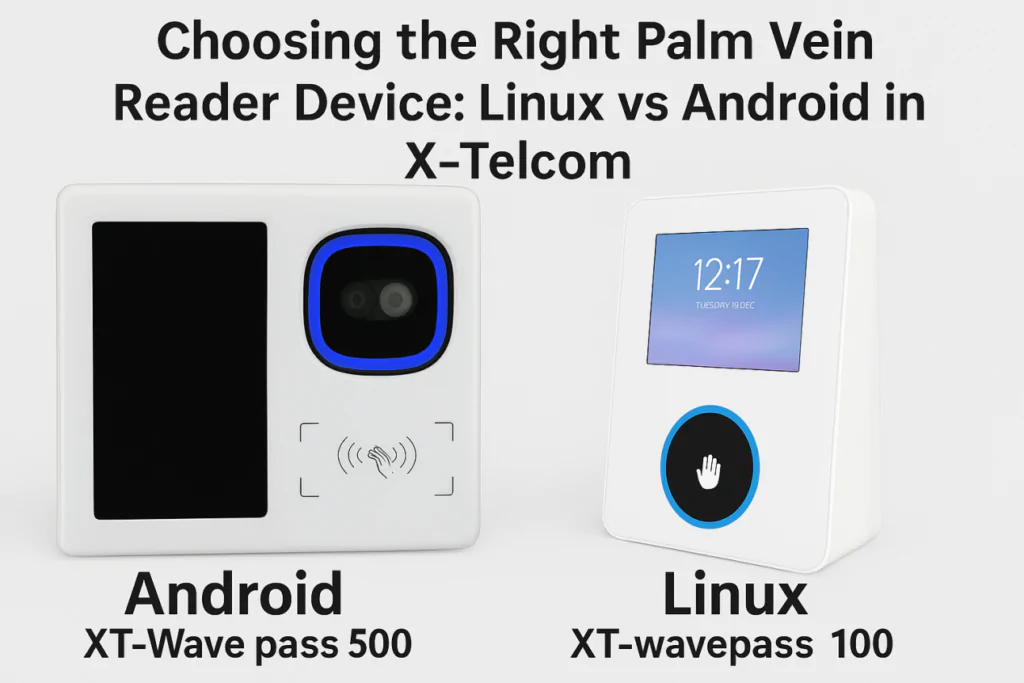In the world of biometric security, the Palm Vein Reader Device is increasingly used for access control, attendance, and identity verification thanks to its contactless, hygienic, and highly accurate recognition. But when selecting between Linux and Android versions, the decision goes beyond just operating systems—it depends on your deployment scale, business model, and integration needs.
Here’s a clear comparison to help you choose the right solution.
Palm Vein Reader Device: Linux vs Android Comparison
| Item | Linux Palm Vein Reader Device | Android Palm Vein Reader Device |
| Verification Method | Local verification only | Local or cloud verification (must be selected before shipment; cannot switch later) |
| Server Interaction | Not supported; only supports user data download | Supported in cloud version |
| Operating System | Embedded Linux OS | Android 11 |
| Access Control | Supports relay output (COM / NO / NC) | Supports relay + optional cloud-based remote control |
| Application Scenarios | Ideal for offline or LAN environments, secure facilities | Ideal for cloud-based solutions, smart buildings, and centralized identity management |
| Cloud Functionality | Not supported | Supports KYC, cloud recognition, attendance, and payment (cloud version) |
| Function Expandability | Limited | Highly customizable: camera, touchscreen, Wi-Fi, Bluetooth |
| UI Interface | Simple, fixed interface | Interactive touchscreen with custom UI/app integration |
Real-World Usage Scenarios
Scenario 1: Multiple Locations with Local Verification
In a distributed setup—such as multiple office buildings across cities—each equipped with a Palm Vein Reader Device, it is possible to centrally distribute user data from a server to each unit. However, the verification is processed locally at each device. There is no real-time communication with a central server during authentication.
✅ Recommended Device: Linux Palm Vein Reader Device – XT-WavePass100
Scenario 2: Centralized Cloud-Based Verification
For enterprises that require real-time verification from a central server, especially in financial payment, government ID, or high-volume user environments (over 10,000 users), a cloud-enabled device is essential. This ensures fast, secure, and scalable identity matching.
Professional Recommendation:
If your application involves payment processing, KYC compliance, or managing large-scale user data, we strongly recommend choosing an Android Palm Vein Reader Device with cloud server pairing.
✅ Recommended Device: Android Palm Vein Reader Device – XT-WavePass500 (内链坦克页: https://x-telcom.com/biometric-technology/)
Conclusion
When choosing a Palm Vein Reader Device, consider more than hardware specs. Ask:
- Do you need offline security and local control? → Go with Linux.
- Do you need cloud integration, real-time identity verification, or large-scale user management? → Choose Android.
- And especially in finance, payment systems, or projects with over 10,000 users, the Android + Cloud combo provides the performance, scalability, and flexibility required for professional-grade solutions.
Learn More
For more technical details, device models, or professional deployment advice,
please contact X-Telcom or visit: www.x-telcom.com
We’re here to help you choose the best Palm Vein Reader Device for your business.



